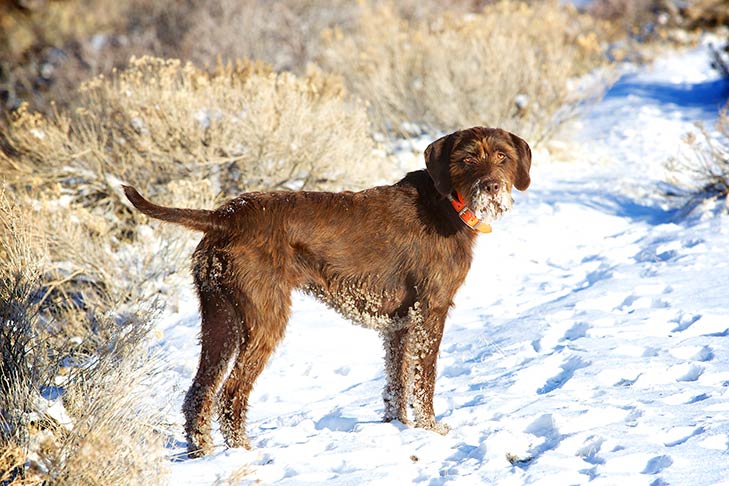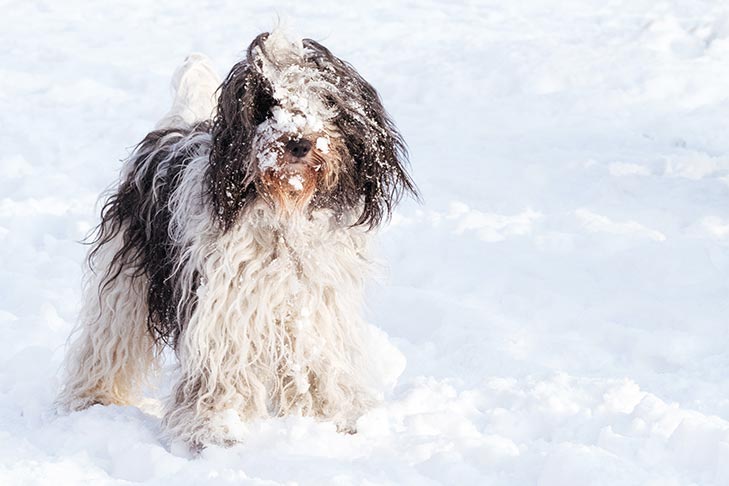
Do dog owners need to be concerned about frostbite? The simple answer is yes. Like humans, dogs can get frostbite.
Frostbite is tissue damage that can occur in extreme cold. Dogs are at risk once the temperature falls below 32 degrees Fahrenheit. Just like with humans, frostbite is a dog’s natural process where blood is redirected from the body’s extremities to vital organs when there is a drop in body temperature. Areas that are furthest away from the heart (such as the tail, ears, nose, and paws) will experience a drop in blood flow, and this can cause tissue damage.
Frostbite in dogs is not usually a life-threatening condition for pups alone. However, it is often followed by hypothermia, which can be fatal.
What Breeds Are Susceptible to Frostbite?
Breed type certainly does play a factor in how susceptible a dog is to getting frostbite. Obviously, cold-weather breeds such as the Siberian Husky and the Alaskan Malamute are less prone to this condition. But all breeds run the risk of frostbite and hypothermia when exposed to cold temperatures for a length of time.
No dog should ever be left unattended in extreme weather for any period. A good rule of thumb is that if it is too cold for people, it is probably too cold for your dog.
Small dogs, shorthaired dogs, puppies, and senior dogs are at the biggest risk of frostbite.

Signs of Frostbite in Dogs
- Pain/tenderness when touched.
- Swelling in the affected area.
- Pale, blue, or gray skin or other discoloration in the affected area.
- Skin cold to the touch.
- Stiffness or clumsiness.
- Blisters or skin ulcers.
- Areas of blackened or dead skin.
Treating Frostbite in Dogs
If you notice your dog exhibiting signs of frostbite, move them to a warm place as soon as possible. Call your vet immediately, and if safe, take your pet there to be treated.
Do not rub the frostbitten skin or use direct heat such as a hairdryer or heating pad.
Your vet may prescribe pain medication and/or antibiotics.
How Can I Prevent Dog Frostbite?
The paws, ears, and tail are the most common areas to be affected by frostbite. A warm dog winter coat, sweater, and boots will help minimize the risk, especially for short-coated breeds or older, more fragile animals. However, clothing for your dog should never be used on an unattended dog or as a substitute for proper care, but rather as an adjunct. In general, it is safer for pets to be in an area where temperatures can be controlled.
Make sure your dog is dry before taking them out for a walk. If a dog is wet or damp, these areas are more vulnerable to frostbite.
Keep winter walks short when possible. A dog can start developing frostbite in as little as 30 minutes.
When in doubt, always consult your veterinarian.
This article is intended solely as general guidance, and does not constitute health or other professional advice. Individual situations and applicable laws vary by jurisdiction, and you are encouraged to obtain appropriate advice from qualified professionals in the applicable jurisdictions. We make no representations or warranties concerning any course of action taken by any person following or otherwise using the information offered or provided in this article, including any such information associated with and provided in connection with third-party products, and we will not be liable for any direct, indirect, consequential, special, exemplary or other damages that may result, including but not limited to economic loss, injury, illness or death.

